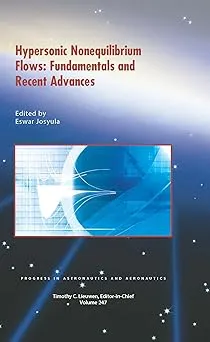Eswar Josyula, "Hypersonic Nonequilibrium Flows: Fundamentals and Recent Advances"
English | ISBN: 1624103286 | 2015 | pages | PDF | 15 MB
English | ISBN: 1624103286 | 2015 | pages | PDF | 15 MB
The high-temperature environment poses an unusual challenge in understanding the basic physics of hypersonic flight. A lack of such understanding can lead to risks and uncertainties in the design of aerospace vehicles. Hypersonic Nonequilibrium Flows documents recent, unprecedented scientific advances in the field of nonequilibrium processes for aerospace applications. These advances have been driven primarily by interest in space access and exploration, or in developing military technologies involving hypersonic flight regimes. In the modeling of hypersonic flows, the last decade has witnessed a reexamination of fundamental principles of kinetic theory and quantum chemistry to describe the kinetic and thermal states, respectively, of the individual gas particles. Modern aerospace programs where nonequilibrium energy transfer processes play a major role may broadly be categorized as exo- and endo-atmospheric. The exo-atmospheric flight programs consist of Earth and planetary reentry programs, as well as access to space programs for applications that include space exploration, flight experiments and demonstrations, missile defense, and the nascent space tourism industry. The endo-atmospheric flight programs are primarily motivated by hypersonic military applications requiring high-precision engagement for tactical, theater and strategic defense, as well as applications involving intelligence, surveillance, and reconnaissance. The nonequilibrium processes considered in this volume are generally associated with flight Mach numbers between 7 and 25, where the shock-layer temperatures range from 3000 to 25,000 K. Hypersonic Nonequilibrium Flows includes fundamental governing equations of nonequilibrium fluid transport and computational approach to calculation of rates and cross-sections in quantized energy states; DSMC approach; radiative heat transfer; a CFD perspective; surface chemistry, with additional chapters on high enthalpy facilities and the associated diagnostic techniques.
Read more



